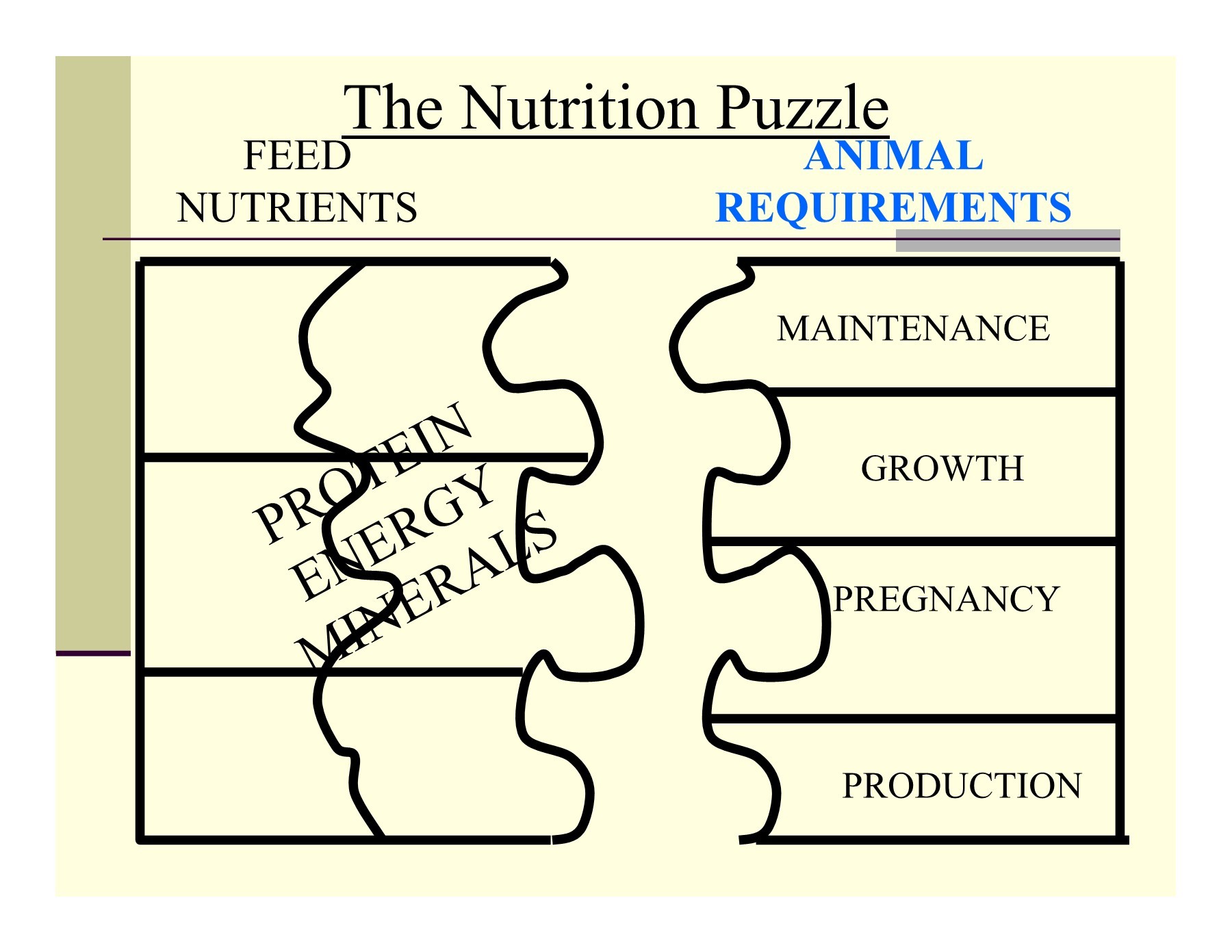

This division is based on relatively simple laboratory techniques although modern technology makes it possible to determine the chemical composition in greater detail, this division satisfies most requirements for feeding farm animals.
Water
Water is the most important nutrient. Without water, animals die very quickly. Water shortages often result in reduced feed intakes, leading to poor animal performance. There is evidence that the provision of clean water in adequate quantities leads to improved animal growth. This is understandable because water is the fluid carrier of chemicals in the animal body.
The water content of feeds varies from as much as 85% in some pastures to 10% to 15% in conserved, dried feeds. The water content of the feed is determined by weighing a representative sample of the feed, drying it in an oven to constant weight, and assuming that the difference in weight loss before and after drying is the moisture content of the feed. When comparing different feeds, the comparison is simplified when the composition is expressed on a dry matter basis.
Protein
Protein can serve as a source of energy, but the main functions of protein are as building blocks of the body, especially muscle. Proteins are made up of amino acids, some of which are considered essential i.e. must be provided in a healthy diet, because certain animals do not have the ability to synthesise the relevant amino acids. Because the rumen of ruminants contains many micro-organisms which can produce essential amino acids, ruminants are not as dependent as mono-gastric animals on their diets for the provision of essential amino acids.
As a rule, ruminants should ingest diets containing at least 10% to 15% crude protein. The crude protein content of feeds is determined by measuring the nitrogen content of the feed, assuming that all the nitrogen is contained in proteins, and multiplying the value by 6.25. This is based on the fact that proteins contain 16% nitrogen. For beef cattle, compiling rations using crude protein content as the measure of protein in the diet, provides satisfactory results in most cases.
Excess protein in a diet is not desirable. Crude protein content in a diet of 25% to 30% can be tolerated by cattle adapted to such diets, but higher levels of crude protein should be avoided.
Energy
Energy comprises the bulk of most diets because energy provides the driving force to do work. The main sources of energy are starches and fats. With ruminant’s crude fibre, which comprises structural carbohydrates in plants, is utilised as an energy source. Although fat is a good source of energy, it usually does not comprise a significant proportion of energy in beef cattle diets. Should fat be included in rations for cattle, the fat should not exceed 5% of the total diet?
With cattle, when a diet contains less than 20% roughage, digestive disturbances are likely, although modern feed additives make it possible to feed rations to cattle containing as little as 15% roughage. The inclusion in a diet of excess amounts of carbohydrate (especially readily fermentable carbohydrates) e.g. maize meal, can cause acidosis. When carbohydrates are broken down in the rumen, acids are formed and when present in large amounts, the pH of the rumen drops to levels at which the rumen microflora cannot function effectively.
The energy content of feeds can only be determined by more complicated laboratory procedures, including measuring the digestibility of the feed when fed to animals. The energy content of feeds is therefore usually not measured routinely. Previously the energy content of feeds was expressed as total digestible nutrients (TDN), but the present measure of the energy content is metabolisable energy (ME), which is measured in mega-joules (MJ).
The digestibility of a feed is the proportion of feed not excreted in faeces and is assumed to have been absorbed into the animal’s body.
Minerals
Minerals are divided into major- (required in larger amounts) and trace minerals (needed in only small amounts). Calcium, potassium, magnesium, sulphur, phosphorus and chlorine are the essential major minerals, and iron, manganese, copper, cobalt, iodine, zinc, molybdenum and selenium are the essential trace minerals. Fluorine, bromine, barium and strontium could be essential. Chromium, nickel, tin, aluminium, vanadium, boron, lead and titanium are usually present in feeds but are considered non-essential.
Click on the link/s below to open the resources.
Mineral requirements and maximum tolerable levels of minerals for beef cattle
Vitamins
With monogastric animals, many vitamins are essential and must be provided in the diet. With ruminants, vitamin deficiencies are rare. The only vitamin that plays a significant role in cattle feeding is Vitamin A. Green grazing contains large amounts of Vitamin A precursors so that only when cattle have not had access to green feed for 2 to 3 months or more, the supplementation of Vitamin A would be necessary.


It is therefore important that the feedlot operator must be able to determine the correct blend of roughage and concentrates to ensure maximum weight gain.
Many factors have an influence on the nutritional value of roughages like hay and silage, for instance, the stage at which crops are harvested, loss of leaves and storage methods as with concentrates.
Another point to consider is the cost of ingredients for mixing but also the convenience, credit, service, and overall ability of a feed supplier to meet your needs. A considerable spread in price per ton may exist for the same feed. Sourcing locally available products such as brewer’s yeast can cheapen a diet when feeding a total mixed diet.
Click on the link/s below to open the resources.
Examples of roughages and concentrates commonly used
Click here to view a video that explains the expectations guide for cattle feeding.